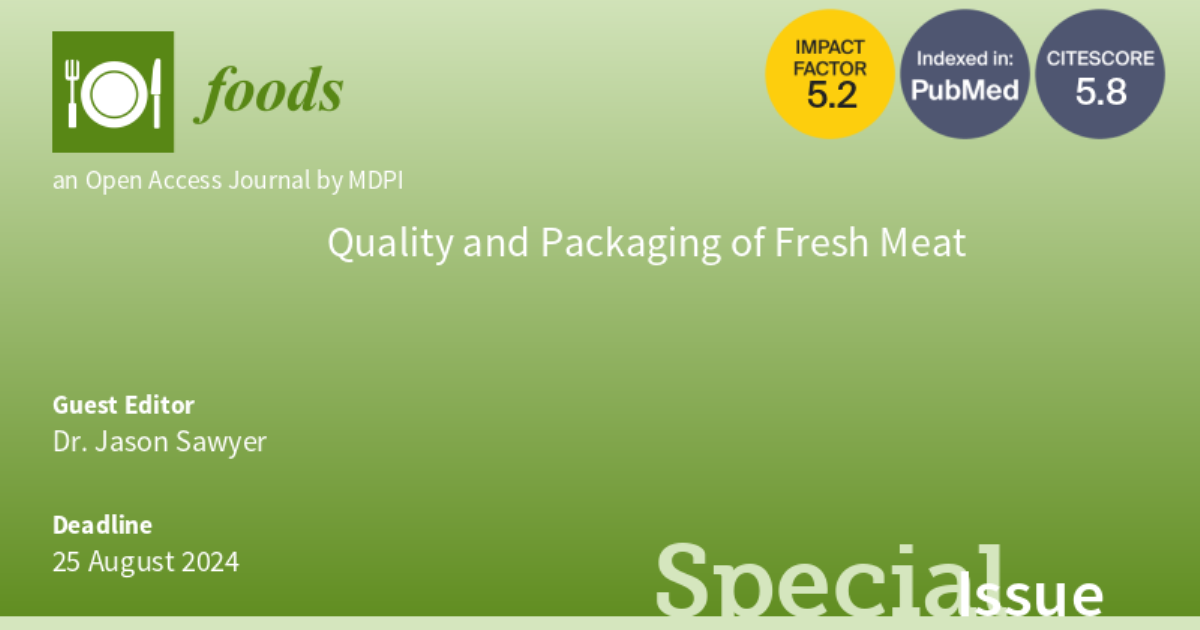Quality and Packaging of Fresh Meat
A special issue of Foods (ISSN 2304-8158). This special issue belongs to the section "Meat".
Deadline for manuscript submissions: 25 August 2024 | Viewed by 2291

Special Issue Editor
Interests: meat products; shelf-life; packaging methodology; meat packaging; surface color
Special Issues, Collections and Topics in MDPI journals
Special Issue Information
Dear Colleagues,
Meat packaging is quintessentially one of the final steps in the production process of meat and food manufacturing prior to consumer purchase. As e-commerce of meat and food has increased over the past three years, the packaging of meat and food is shifting to methods that support extended storage and durability during logistical paths, from the manufacturer to the consumer. Furthermore, meat and food packaging in either bulk or single serving has evolved, leading to efforts that help to identify methods of reducing packaging waste. With the creation of new packaging technologies, a foundation of knowledge should be organized to highlight the changes and challenges in recognizing meat and food characteristics caused by using new packaging methodologies or logistical pathways to the consumer. This Special Issue aims to provide a foundational resource for new findings on fresh meat quality that are influenced by packaging and storage methodologies. New technologies may include, but are not limited to, storage temperature, lighting, age of raw materials, shelf life, antimicrobials, processing aids, packaging atmospheres, or even packaging film barrier properties.
Dr. Jason Sawyer
Guest Editor
Manuscript Submission Information
Manuscripts should be submitted online at www.mdpi.com by registering and logging in to this website. Once you are registered, click here to go to the submission form. Manuscripts can be submitted until the deadline. All submissions that pass pre-check are peer-reviewed. Accepted papers will be published continuously in the journal (as soon as accepted) and will be listed together on the special issue website. Research articles, review articles as well as short communications are invited. For planned papers, a title and short abstract (about 100 words) can be sent to the Editorial Office for announcement on this website.
Submitted manuscripts should not have been published previously, nor be under consideration for publication elsewhere (except conference proceedings papers). All manuscripts are thoroughly refereed through a single-blind peer-review process. A guide for authors and other relevant information for submission of manuscripts is available on the Instructions for Authors page. Foods is an international peer-reviewed open access semimonthly journal published by MDPI.
Please visit the Instructions for Authors page before submitting a manuscript. The Article Processing Charge (APC) for publication in this open access journal is 2900 CHF (Swiss Francs). Submitted papers should be well formatted and use good English. Authors may use MDPI's English editing service prior to publication or during author revisions.
Keywords
- meat packaging
- meat products
- shelf-life
- surface color
- instrumental color
- textural characteristics






